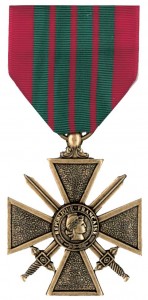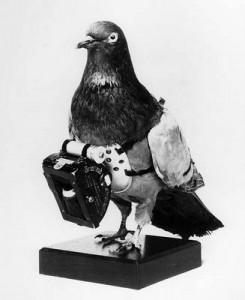Before the advent of the two-way radio, wire transmission cables covered the World War I battlefields. Although being the most technologically advance form of communication available, it did face its fair share of hurdles on enemy territory especially around rough and mountainous terrain.
This is where the pigeon comes in. With the ability to fly at speeds of 60 miles per hour and cover 600 miles in a single journey, they were the practical choice for sending messages over long distances. With designated American soldiers hoisting their carrier pigeon along with them, messages were handed down from military officers, written down, tucked into a capsule located on the pigeon’s foot and sent to fly back to the home coop.
One of the most famous war pigeons goes by the french name Cher Ami, which translates to dear friend in English. Her story begins on the day of Oct. 4th, 1918. In the harrowing tale of courage, Major Charles Whittlesey and 500 American soldiers are pinned down on a hill behind enemy lines with no supplies. Facing German soldiers on one side and friendly artillery fire on the other, Cher Ami is sent on her infamous journey back to the home coop with the message:
” We are along the road parallel to 276.4.
Our own artillery is dropping a barrage directly on us.
For heaven’s sake, stop it.”
Barraged by bullets on the German side, Cher Ami suffered an injury to her foot but managed to complete her 25 mile journey back to base. Horrified by the news of bad artillery trajectory, the shelling ceased and saved the lives of 194 American soldiers. Although Cher Ami did succomb to her wounds, she received the Dickin medal for the valiant service.

Today, Cher Ami can be found in her immortalized form at the Smithsonian Institute offering the tale of her legendary status to anyone willing to stop by.


Leave a response